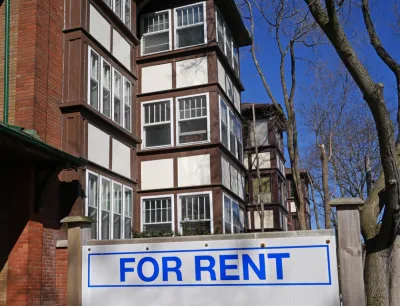A higher share of Americans are renters than at any point in decades. Neighborhoods all over the country, especially in downtowns, have many more renters than they did in 2010.

Recent analysis by RentCafe sheds light on how the growing share of renters in the U.S. population—a trend reflected in national statistics for years now—is transforming neighborhoods.
According to this analysis which uses the latest data from the U.S. Census Bureau, 101 U.S. zip codes switched to majority renter in the past decade. An article by Andrea Neculae for RentCafe provides more details on the analysis, including infographics to reflect the trends and locate the parts of the country with most new majority renter neighborhoods.
Philadelphia has the most new majority renter zip codes of any U.S. city, with seven, followed by Memphis and Houston, each with six. The analysis also ranked zip codes by the percentage of change in the number of renters. The 43240 zip code in Columbus, Ohio leads the list with a 157 percent change, followed by 60606 in Chicago and 78256 in San Antonio, with 151 percent and 132 percent, respectively.
The analysis notes that downtown areas, in particular, became more popular for young renters over the past decade—as reflected in the zip codes with the largest changes in renter populations since 2010.
FULL STORY: Renting Out the Neighborhood: 101 Zip Codes Switch From Homeowner to Renter Majority

National Parks Layoffs Will Cause Communities to Lose Billions
Thousands of essential park workers were laid off this week, just before the busy spring break season.

Retro-silient?: America’s First “Eco-burb,” The Woodlands Turns 50
A master-planned community north of Houston offers lessons on green infrastructure and resilient design, but falls short of its founder’s lofty affordability and walkability goals.

Delivering for America Plan Will Downgrade Mail Service in at Least 49.5 Percent of Zip Codes
Republican and Democrat lawmakers criticize the plan for its disproportionate negative impact on rural communities.

Test News Post 1
This is a summary

Test News Headline 46
Test for the image on the front page.

Balancing Bombs and Butterflies: How the National Guard Protects a Rare Species
The National Guard at Fort Indiantown Gap uses GIS technology and land management strategies to balance military training with conservation efforts, ensuring the survival of the rare eastern regal fritillary butterfly.
Urban Design for Planners 1: Software Tools
This six-course series explores essential urban design concepts using open source software and equips planners with the tools they need to participate fully in the urban design process.
Planning for Universal Design
Learn the tools for implementing Universal Design in planning regulations.
EMC Planning Group, Inc.
Planetizen
Planetizen
Mpact (formerly Rail~Volution)
Great Falls Development Authority, Inc.
HUDs Office of Policy Development and Research
NYU Wagner Graduate School of Public Service





























